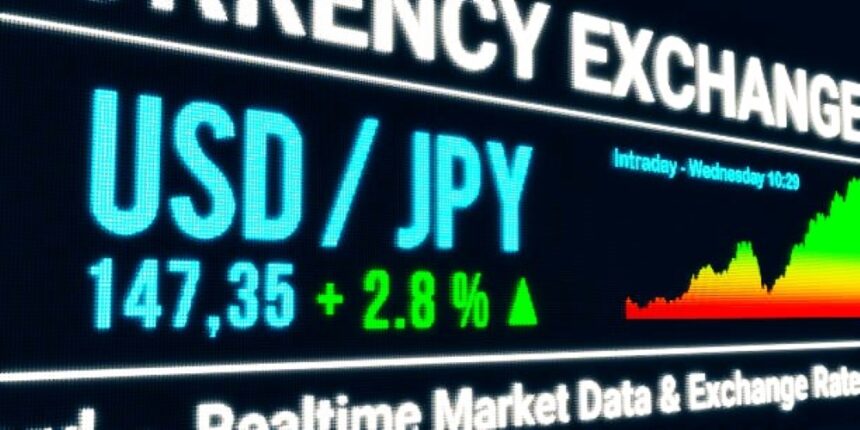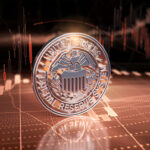Japanese Yen Loses Early Momentum Against US Dollar Ahead of Trump’s Inaugural Address.
The Japanese Yen (JPY) edged higher initially on Monday, supported by upbeat domestic economic data and growing expectations for a Bank of Japan (BoJ) rate hike later this week. However, the Yen failed to extend gains meaningfully as broader risk sentiment improved and investors turned cautious ahead of US President-elect Donald Trump’s inaugural speech. The USD/JPY pair stabilized near 156.20, with traders closely watching a packed calendar of events that could sway both monetary policy and risk flows.
Japanese yen Drifts Lower But Holds Above Key Support Zone
In the early European session, USD/JPY traded in a narrow band, slipping modestly to the 156.15–156.20 zone. The movement reflects the market’s conflicted signals: strength in Japan’s macroeconomic indicators is pushing JPY higher, while upbeat risk sentiment and uncertainty around US fiscal and trade policy under the incoming Trump administration are limiting demand for the safe-haven currency.
The near-term path for the pair hinges on two high-impact events: Trump’s speech later Monday and the BoJ’s policy decision on January 24.
Japan’s Core Machinery Orders Rise for Second Straight Month
The Japanese government reported on Monday that Core Machinery Orders rose by 3.4% month-over-month in November, marking the second consecutive monthly gain and the strongest reading in nine months. This data reflects a rebound in corporate investment, signaling growing confidence in Japan’s economic recovery.
Machinery orders are considered a leading indicator of capital spending, and the latest uptick adds to a broader narrative of strengthening domestic demand. With inflation pressures broadening and wage growth accelerating, the report has bolstered the argument for a near-term BoJ interest rate hike.
BoJ Officials Signal Readiness to Hike Rates Again
Comments from BoJ policymakers last week further fueled market speculation of imminent policy tightening. BoJ Deputy Governor Ryozo Himino remarked that rate hikes will be “on the table” during the upcoming January 23–24 meeting, as sustained wage growth and rising consumer prices justify additional tightening.
Governor Kazuo Ueda also reiterated that the central bank is prepared to raise rates this year if price and labor market conditions remain favorable. A BoJ report earlier this month highlighted that wage increases were spreading across firms of all sizes and sectors, laying the groundwork for normalization from decades of ultra-loose monetary policy.
Market participants are now pricing in at least one more rate hike in Q1 2025, and possibly a second later in the year.
Japanese yen Bulls Cautious Ahead of Trump’s Inauguration Speech
Despite supportive domestic fundamentals, traders remained hesitant to extend long positions in the Japanese Yen ahead of Donald Trump’s inaugural address scheduled later on Monday. Investors are seeking clarity on Trump’s economic agenda, particularly regarding trade policy, tariffs, and fiscal spending.
During his campaign, Trump promised aggressive tariff measures, especially targeting China and Mexico, alongside corporate tax cuts and infrastructure spending. Markets fear that these policies could stoke inflation and complicate the Federal Reserve’s rate path, leading to broader market volatility.
Given these uncertainties, risk assets such as equities are holding firm, while the JPY’s traditional safe-haven appeal remains muted for now.
US Dollar Supported by Bond Yield Rebound and Data Resilience
On the US front, the US Dollar saw a mild pullback last week, weighed down by softer inflation data. However, some of that weakness was reversed as US Treasury yields bounced on Friday. The 10-year yield rebounded from a two-week low, lending support to the Greenback and helping USD/JPY recover from a four-day losing streak.
The Housing Starts report released by the US Census Bureau showed a 3.3% rise in December, the strongest reading since February 2024. While Building Permits dipped slightly, the broader takeaway is that the US housing market remains relatively healthy.
Moreover, dovish commentary from Fed Governor Christopher Waller indicated that 3–4 rate cuts could still be possible in 2025, even if inflation continues to trend lower. This has injected some uncertainty into the US Dollar’s outlook, keeping traders cautious in the lead-up to key speeches and economic releases.
Markets Brace for BoJ Decision and Global Policy Divergence
As the BoJ’s two-day policy meeting begins on Thursday, traders expect more guidance on the central bank’s path out of negative interest rates. With inflation nearing the 2% target, wage growth broadening, and capital investment improving, conditions are aligning for a gradual exit from ultra-accommodation.
Should the BoJ raise rates again—as many now expect—it would mark a historic shift in global monetary dynamics. Most other major central banks, including the Fed and ECB, are contemplating rate cuts this year due to easing inflation and slowing growth.
A further BoJ rate hike could strengthen the Yen, particularly against low-yielding currencies. But any disappointment—such as a delay in tightening—may spark a sell-off in JPY and lift USD/JPY sharply.
Technical Analysis: Range-Bound, But a Break is Looming
Technically, USDJPY appears trapped in a tight consolidation zone between 155.50 and 157.00. Momentum indicators are neutral, and traders are waiting for a catalyst—either from Trump’s speech or the BoJ—to trigger a breakout.
Key resistance:
- 157.00 – Round figure resistance and recent swing high
- 158.10 – October 2024 high
Key support:
- 155.50 – Near-term bottom
- 154.80 – 50-day moving average
A hawkish BoJ or dovish Fed could see the pair testing the 154.00 handle in the coming weeks.
Investor Outlook: Volatility Likely to Spike
With both Japanese and US policy landscapes in transition, the week ahead could bring significant volatility to USD/JPY. A surprisingly hawkish BoJ or strong anti-China rhetoric from Trump could tilt markets swiftly.
Key risk events:
- Trump’s Inaugural Address (Monday)
- BoJ Rate Decision & Press Conference (Thursday-Friday)
- US PCE Inflation Data (Friday)
Traders are advised to watch global headlines, central bank signals, and bond yields closely.
[faq-schema id=”39918″]









